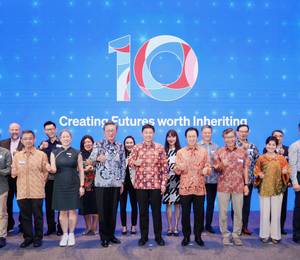Two educational seminars in Chennai and Hyderabad attracted the principal players from the timber industry in southern India, according to the American Hardwood Export Council (AHEC), the leading international trade association for the American hardwood industry.
The seminars, which were held on 22 and 24 April 2025, in Chennai and Hyderabad respectively, focused on all aspects of American hardwoods, including the resource, sustainable forest management, production, kiln-drying, lumber grading and the wide range of species available. A trade servicing mission was also held as part of the week-long visit to both cities, where AHEC representatives met with leading timber importers, wood processing factories, and furniture designer-makers.
Having not visited Chennai or Hyderabad for some time, AHEC felt that it would be useful to reconnect with trade and manufacturer contacts in both cities, as well as to put on two educational seminars and networking events. Two days were spent in Chennai visiting hardwood importers and some end-users, before AHEC hosted the first of its two ‘Talking Timber’ events in conjunction with the Chennai Timber & Plywood Merchants Association.
Following Chennai, AHEC travelled to Hyderabad and spent a day and a half meeting hardwood importers and manufacturers. Hyderabad is home to a developing core of innovative and high-end furniture manufacturers, some of which have recently started using American hardwoods, and some of which are preparing to do so.
Roderick Wiles, AHEC Regional Director, said, “It is now abundantly clear that the rapidly developing (and substantial) small- to medium-sized furniture designer-maker sector is looking for alternatives to teak and other Indian species for their products. They want to try American hardwoods. For the most part, companies within this sector are not yet big enough to import full containers of American hardwood lumber directly, and they are, therefore, reliant upon sourcing lumber from Indian importer-distributors. This can present a problem, as the importers do not always carry ready stocks of American hardwood lumber and, when they do, they are often sawn in India from imported logs, which means that they are not properly kiln-dried or graded for consistent yield. This is not suitable for high-end furniture production.”
Given the increasing demand for American hardwoods, AHEC feels American hardwood exporters must continue to market their lumber to importers and stockists to increase the available inventory of high-quality and kiln-dried lumber on the ground in India. This is slowly improving, and it is also reflected in U.S. hardwood exporters becoming increasingly active in India in recent years.
Despite the challenge of widespread in-country availability, a group of furniture designer-manufacturers in Hyderabad is looking to overcome the issue of availability by joining together to import full containers of American hardwood lumber directly.
According to AHEC, demand for North American hardwood lumber has been increasing in recent years, with 2025 looking set to be another strong year for US hardwood lumber exports to India. Whilst the export-focused furniture and handicraft manufacturers—primarily concentrated in Rajasthan—represent the greatest current volume market opportunity for US hardwood lumber in India, the long-term target market will be domestic consumers. Currently, this market is primarily serviced by smaller furniture, joinery and flooring manufacturers, like those in Chennai and Hyderabad, who offer bespoke solutions and are not primarily export-focused.
“India offers massive potential for the consumption of American hardwoods across many different sectors and both for domestic and export manufacturing. The seminars and trade servicing mission provided us with a great opportunity to interact with major players and to reinforce the positive attributes of American hardwoods. The visits have also revealed a high level of awareness and understanding about various species and their applications, which is further reflected in the demand for American hardwoods in India. Our visit was timely as it offered a perfect forum for us to discuss ways of working with Indian manufacturers, particularly given the pressing need for alternative sources of hardwood lumber in India,” concluded Wiles.













